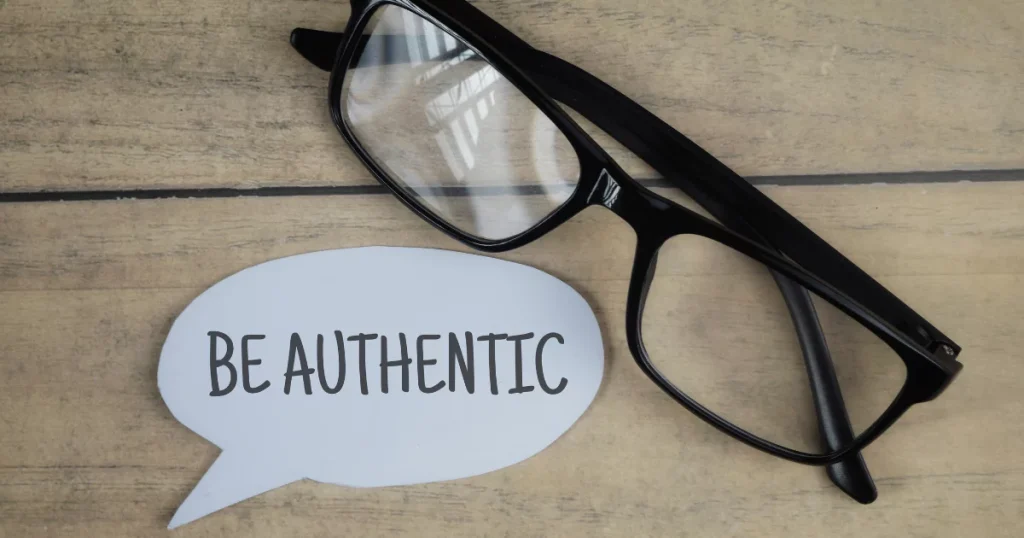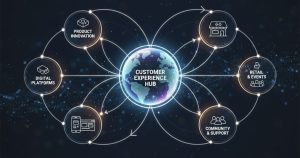How to Measure Brand Authenticity Using Real-Time Data?

Brand authenticity can make or break your business. Consumers can spot fake brands from miles away, and they’re not afraid to call them out. But how do you know if your brand feels authentic to your audience?
The answer lies in data. Real-time data gives you instant insights into how people truly perceive your brand. This guide will show you exactly how to measure brand authenticity using the data that matters most. You’ll learn which metrics to track, what tools to use, and how to turn insights into action.
What is Brand Authenticity?
Brand authenticity means your brand is genuine, honest, and true to its values. It’s when your actions match your words. Authentic brands don’t pretend to be something they’re not.
Think of Patagonia. They say they care about the environment. They prove it by donating profits to environmental causes and using sustainable materials. Their actions align with their message.
Brand authenticity has three key elements:
- Consistency: Your brand message stays the same across all channels
- Transparency: You’re open about your processes, mistakes, and values
- Purpose: You have a clear mission beyond just making money
Authentic brands build trust. They create emotional connections with customers. They stand for something meaningful.
Why is Brand Authenticity Important?
Brand authenticity drives real business results. Here’s why it matters:
- Customers demand it. Studies show that 86% of consumers say authenticity is important when deciding which brands to support. They want to buy from companies they trust.
- It builds loyalty. Authentic brands create deeper relationships with customers. People stick with brands that share their values. They become brand advocates who spread positive word-of-mouth.
- It protects your reputation. Authentic brands recover faster from crises. Customers give them the benefit of the doubt because they’ve built up trust over time.
- It drives sales. Authentic brands can charge premium prices. Customers pay more for brands they believe in.
The cost of being inauthentic is high. One fake move can destroy years of brand building in minutes.
What Does It Mean to Measure Brand Authenticity?
Measuring brand authenticity means tracking how genuine your brand appears to your audience. It’s about understanding the gap between what you say and what people actually experience.
You can’t just assume your brand is authentic. You need proof. Data shows you where you’re succeeding and where you’re falling short.
Measuring brand authenticity involves tracking both quantitative and qualitative data:
- Quantitative data includes metrics like engagement rates, sentiment scores, and trust ratings. These give you hard numbers to track over time.
- Qualitative data includes customer feedback, social media comments, and brand mentions. This shows you the emotions and feelings behind the numbers.
The key is combining both types of data to get a complete picture of your brand authenticity.
Why It’s Essential to Measure Brand Authenticity Today

The digital age has changed everything. Social media amplifies every brand message—both good and bad. One authentic moment can go viral and boost your brand. One inauthentic move can destroy your reputation overnight.
Real-time measurement is crucial because:
- Speed matters. Brand perception can change in hours, not months. You need to catch problems before they explode.
- Customers are more vocal. People share their opinions instantly on social media. You need to monitor these conversations as they happen.
- Competition is fierce. Other brands are working hard to be authentic too. You need to stay ahead by constantly improving.
- Trust is fragile. Once broken, trust takes years to rebuild. Real-time monitoring helps you protect what you’ve built.
Core Metrics to Measure Brand Authenticity Using Real-Time Data
Here are the most important metrics to track when you measure brand authenticity:
Sentiment Analysis Score
This measures whether people talk about your brand positively, negatively, or neutrally. Track sentiment across social media, reviews, and news mentions.
Look for:
- Overall sentiment trends over time
- Sentiment spikes around specific events
- Differences in sentiment across platforms
Trust and Credibility Ratings
Survey customers regularly about how much they trust your brand. Ask specific questions like:
- “Do you trust this brand to deliver on its promises?”
- “How credible do you find this brand’s communications?”
- “Would you recommend this brand to friends?”
Engagement Quality
Not all engagement is equal. Authentic brands get meaningful interactions, not just likes. Track:
- Comment-to-like ratios
- Share rates
- Time spent engaging with content
- Quality of comments and feedback
Brand Mention Context
Monitor how people mention your brand. Are they talking about your values? Your products? Your customer service? The context tells you what drives authenticity perceptions.
Employee Advocacy Rate
Your employees are your best authenticity ambassadors. Track:
- How often employees share company content
- Employee satisfaction scores
- Employee reviews on sites like Glassdoor
Customer Retention Rate
Authentic brands keep customers longer. Track how many customers stay with you over time. High retention often signals strong authenticity.
Response Time and Quality
How quickly and thoughtfully you respond to customers shows authenticity. Track:
- Average response time to customer queries
- Resolution rates
- Customer satisfaction with responses
Tools and Platforms to Measure Brand Authenticity in Real-Time
The right tools make measuring brand authenticity much easier. Here are the most effective options:
Social Media Monitoring Tools
Hootsuite Insights tracks brand mentions across social platforms. It provides real-time sentiment analysis and identifies trending topics.
Sprout Social offers comprehensive social listening with detailed analytics on brand conversations and audience sentiment.
Brandwatch provides advanced social intelligence with customizable dashboards for tracking authenticity metrics.
Customer Feedback Platforms
Trustpilot collects and analyzes customer reviews. It shows trust scores and helps you track reputation over time.
SurveyMonkey lets you create custom surveys to measure brand trust and authenticity perceptions.
Qualtrics offers enterprise-level customer experience tracking with real-time feedback analysis.
Analytics and Reporting Tools
Google Analytics tracks website engagement and behavior patterns that indicate authentic connections.
Hotjar shows how users actually interact with your website through heatmaps and session recordings.
Tableau creates visual dashboards combining data from multiple sources for comprehensive authenticity tracking.
Review and Rating Aggregators
Review Trackers monitors reviews across multiple platforms and provides sentiment analysis.
Reputation.com tracks online reputation and provides tools for managing customer feedback.
How to Interpret Data to Truly Measure Brand Authenticity
Raw data means nothing without proper interpretation. Here’s how to make sense of your authenticity metrics:
Look for Patterns, Not Just Numbers
A single negative comment doesn’t mean your brand is inauthentic. Look for patterns over time. Are complaints increasing? Are positive mentions declining? Focus on trends rather than individual data points.
Compare Across Channels
Your brand might seem authentic on Instagram but inauthentic on LinkedIn. Compare metrics across different platforms to identify consistency gaps.
Correlate with Business Events
Match data spikes with specific business activities. Did sentiment drop after a product launch? Did trust scores rise after a corporate social responsibility campaign? This helps you understand what drives authenticity perceptions.
Segment Your Audience
Different customer segments might perceive your authenticity differently. Millennials might value environmental responsibility while Gen X focuses on product quality. Analyze data by demographic segments.
Watch for Leading Indicators
Some metrics predict authenticity problems before they become major issues. Employee satisfaction often drops before public authenticity problems emerge. Monitor these early warning signs.
Case Studies: Brands That Successfully Measure Brand Authenticity Using Real-Time Data
Patagonia’s Environmental Activism
Patagonia tracks social media mentions about their environmental initiatives. They measure sentiment around their activism campaigns and monitor customer feedback about their sustainable practices.
When they donated their $10 million tax cut to environmental groups, they tracked:
- Social media sentiment (98% positive)
- Share rates (300% above normal)
- Website traffic to sustainability pages (500% increase)
- Customer trust scores (15% improvement)
This data proved their authentic commitment to environmental causes resonated with customers.
Ben & Jerry’s Social Justice Stance
Ben & Jerry’s monitors real-time reactions to their social justice positions. They track engagement quality and sentiment across all platforms.
When they took a stand on criminal justice reform, they measured:
- Comment quality and depth
- Share rates versus competitors
- Customer retention among different demographic groups
- Employee advocacy rates
The data showed that while some customers disagreed, overall authenticity scores improved because people respected their consistent values.
Dove’s Real Beauty Campaign
Dove continuously measures how their body positivity message resonates across different markets. They track sentiment analysis and engagement quality for authenticity insights.
They monitor:
- Emotional responses to campaign content
- User-generated content quality
- Long-term brand trust scores
- Purchase intent among target demographics
This ongoing measurement helps them stay authentic to their real beauty mission while adapting to different cultural contexts.
Best Practices to Measure Brand Authenticity Continuously
Set Up Automated Alerts
Create alerts for significant changes in authenticity metrics. If sentiment drops by 20% or trust scores decline, you need to know immediately.
Create Regular Reporting Rhythms
Review authenticity metrics weekly for tactical adjustments and monthly for strategic insights. Quarterly deep dives help identify long-term trends.
Combine Multiple Data Sources
Don’t rely on just one tool or metric. Combine social media data, customer surveys, review analysis, and employee feedback for complete insights.
Track Competitors
Monitor how your authenticity compares to competitors. Are they gaining trust while you’re losing it? Competitive benchmarking reveals opportunities.
Act on Insights Quickly
Data without action is worthless. When you identify authenticity gaps, address them immediately. Speed of response often matters more than perfection.
Train Your Team
Ensure everyone understands how to interpret authenticity data. Marketing, customer service, and leadership teams all need these insights to make better decisions.
Common Mistakes to Avoid When You Measure Brand Authenticity
Focusing Only on Positive Metrics
Many brands only track positive indicators while ignoring negative signals. This creates blind spots that can lead to authenticity crises.
Measuring Too Infrequently
Monthly or quarterly measurement isn’t enough. Brand perception can change daily. Set up real-time monitoring for critical metrics.
Ignoring Context
A metric spike means nothing without context. Always investigate why numbers changed before making decisions.
Over-Relying on Automation
While automated tools are helpful, human interpretation is crucial. Machines can’t always understand sarcasm, cultural nuances, or complex emotions.
Not Segmenting Data
Treating all customers the same misses important insights. Different segments have different authenticity expectations.
Measuring Vanity Metrics
Likes and followers don’t indicate authenticity. Focus on meaningful engagement and genuine customer feedback






